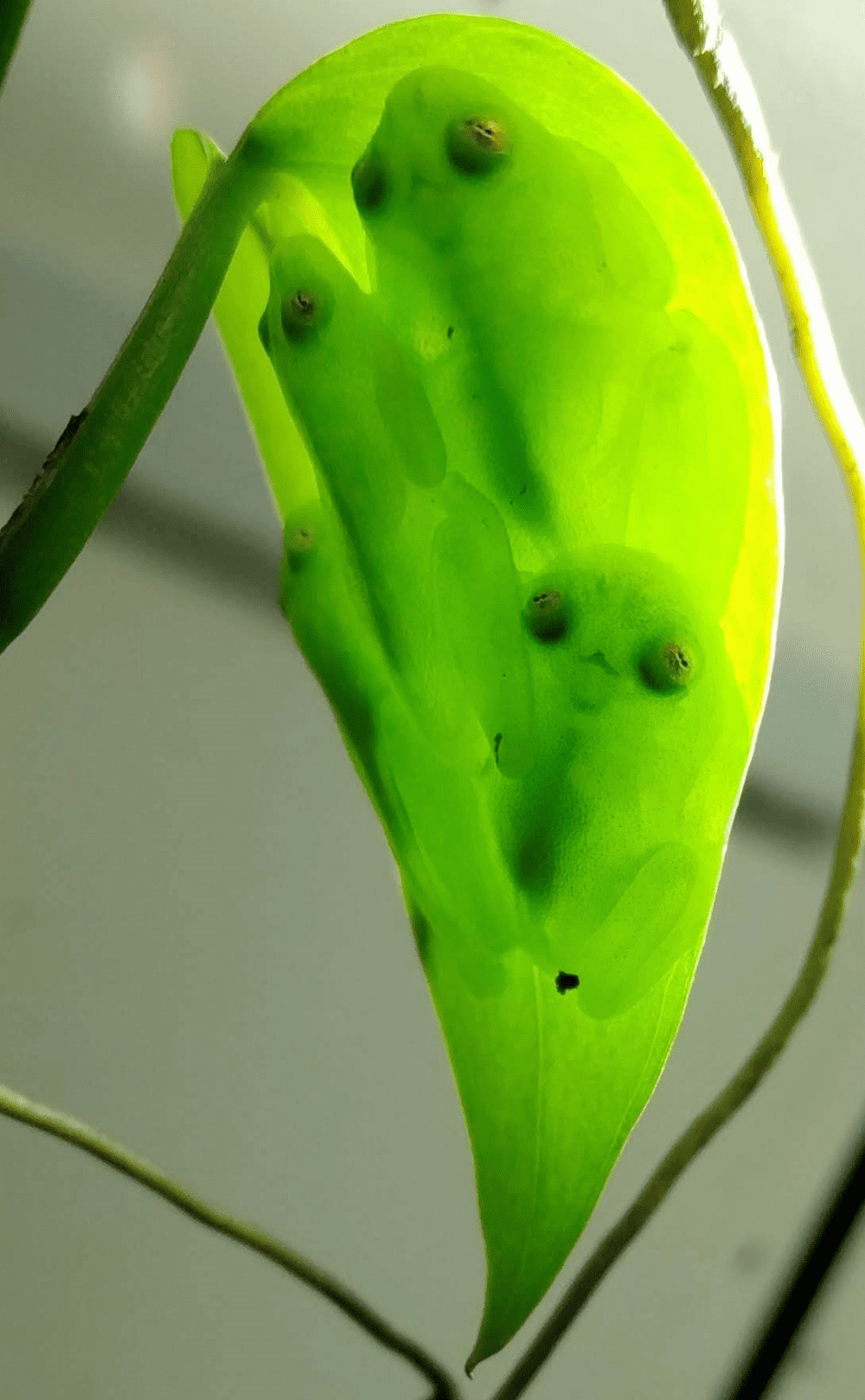Glass frogs are camouflage specialists. As nocturnal animals, they sleep all day on bright green leaves against which their translucent bodies are almost impossible to see, protecting them from predation. Now, new research outlines the physiological magic trick they perform to remain so see-through: sucking their red blood cells into their liver.
It sounds gross, but understanding how the glass frog Hyalinobatrachium fleischmanni does this could have big implications for pharmaceuticals, with the potential for new drugs for heart conditions and blood clotting disorders.
Even in bright light, snoozing glass frogs are remarkably translucent. Image credit: Jesse Delia
Blood is an obstacle when it comes to achieving true invisibility – even if you managed to evolve transparent tissues, the body needs red blood cells to stay alive. Red blood cells, as the name suggests, are red, which got scientists wondering how glass frogs manage to be so translucent.
Using calibrated color photography and photoacoustic imaging, researchers on a new paper were able to establish that glass frogs become 34 to 61 percent more transparent by removing roughly 89 percent of their red blood cells from circulation and “hiding” them in their liver. Upon waking, they unleash the red blood cells, making them return to an opaquer coloration as they clamber about under cover of darkness.
Red blood cells have a big impact on the coloration of tissue. Image credit: Jesse Delia
What makes the magic trick so impressive is that they don’t die as a result, because for most vertebrates, gathering all the red blood cells into one place like this usually results in clotting. Forming clots like those seen in deep vein thromboses (DVTs) can be life-threatening to humans, so understanding how to safely accumulate red blood cells could be potentially life-saving for people with certain blood disorders.
The magicians haven’t quite given up their tricks just yet, however, as exactly how they hold back and release their red blood cells like this isn’t yet known. However, the team behind the discovery believe it’s worth trying to peek fully behind the curtain, as understanding the mechanisms that underpin the behavior could have big ramifications for human medicine.
“The mechanism that drives RBC re-distribution in glassfrogs is not understood. It is unclear if the glassfrog can actively manipulate the changes in RBC circulation – for example, in the presence of a predator,” said Nelly Cruz and Richard White in a related Perspective. “Another intriguing question is how sequestration of RBCs in the liver affects cellular respiration and whether the glassfrog has a special metabolism that adapts to the drastic changes in RBC circulation.”
The study was published in Science.
Source Link: Glass Frogs Hide Blood In Their Liver To Become See-Through While Sleeping
